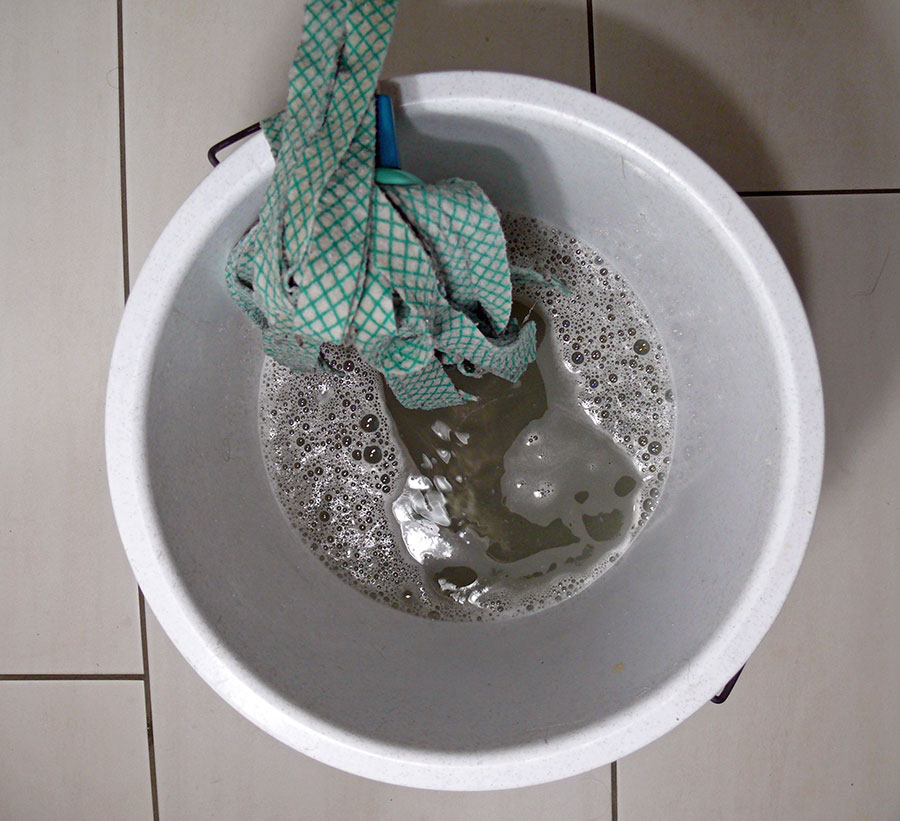
Where to Dump Dirty Mop Water (Safest Methods)
Cleaners Talk is reader-supported. This post contains affiliate links, we may earn a commission at no additional costs to you. As an Amazon Associate we earn from qualifying purchases.
You’re trying to save water and protect the environment, so you become conflicted whether to dump the mop water to plants or throw it away. But where should you dispose of dirty mop water properly?
You should dump dirty mop water into the sanitary sewer system. In other words, dump it into the toilet. Never dump dirty water down your sink. Mop water is full of germs and dirt, so the worst thing you can do is to dispose of it in a place where you’re likely to drop a toothbrush.
In this article, you will learn more about dirty soapy mop water and what to do with it. You will also learn the cleaning chemicals found inside dirty soapy mop water. Let's get started.
Where should dirty mop water be disposed of?
Dump dirty mop water down the toilet, which leads to the sanitary sewer system. Never dump dirty mop water down sinks, where it can spread germs and contribute to clogs. Flush it down the toilet, instead. Toilets have much larger drains and are much less likely to get clogged by sand or mop strings than sinks.
In commercial areas, employees should dispose of dirty mop water in a floor drain designed for dumping water. The area used for storing cleaning supplies and tools should include a drain as well as a utility sink for filling buckets. Dirty water should never be dumped in a sink used in food preparation or for hand washing.
How often should you dump mop water?
There's no standard regulation concerning the frequency with which mop heads or water should be changed, but as soon as your bucket becomes murky, dump the dirty mop water and replace it with fresh water.
Can you suggest any other use of the water left after mopping?
There is nothing you can do with dirty mop water other than to throw it down the toilet. Mop water could contain a toxic blend of chemicals that are mopped off the floor and settled particles in the atmosphere.
The hidden dangers in mop water not only contain everyday air pollutants such as mold spores, pollen, and plant and insect parts, but also certain toxic items such as bacteria, dust mites and dust mite feces, rodent waste, cigarette smoke, and heavy metal particles. Dispose of mop water immediately.
Is mop water hazardous?
Mop water has the potential to become hazardous due to the many chemicals found inside it. According to the Water and Wastes Digest, mop water contains chlorine, sodium hydroxide, ammonia, and triclosan, all of which has the potential to harm human health and the environment.

What are the cleaning chemicals in mop water?
Did you know that the cleaning chemicals found in mop water can present environmental and health issues? We consulted with a wastewater and safety consultant to find out the chemicals found in mop water.
1. Chlorine
Chlorine is used in cleaners and water disinfection, which is a respiratory irritant and thyroid disruptor. It dissolves when mixed with water but can also escape from water and enter air under certain conditions.
2. Sodium Hydroxide
Sodium hydroxide is found in oven cleaners and drain openers. If it gets in contact with the skin or eyes, it can cause severe burns. Solid sodium hydroxide or solutions of sodium hydroxide will cause chemical burns, permanent injury or scarring, and even blindness if it contacts unprotected human or animal tissue.
3. Ammonia
Ammonia is found in all-purpose cleaners, including glass cleaners.
Inhaled ammonia can immediately burn the nose, throat, and the respiratory tract. However, if lower concentrations are inhaled, nose and throat irritation may be experienced, as well as coughing.
Low concentrations of ammonia that come in contact with the skin or eyes can quickly cause irritation. High concentrations of ammonia, on the other hand, can cause severe injury and burns.
4. Triclosan
Triclosan is an ingredient added to certain antibacterial soaps to reduce or prevent bacterial contamination. Recent studies, however, have raised questions about whether triclosan might be hazardous to human health.
Research has shown that triclosan might contribute to the development of antibiotic-resistant germs and might be harmful to the immune system due to the change in the gut microbiota.
Is mop water good for plants?
Mop water is not good for plants.
The active ingredient found in mop water, sodium hydroxide, would raise the soil pH that may starve the plants of nutrients which could kill it or at the very least would stunt its growth.
The sodium hydroxide can also damage the tissues when it’s applied directly to the plants. The excess of hydroxide ions can participate in reactions like the breakup of lipids that cause serious harm to living tissue.
In short, you’re not doing your plants a favor by dumping dirty mop water on it or onto the soil. Your best course of action is to dump the dirty mop water down the toilet. Water your plants with fresh water.
Conclusion
Now you know where to dump dirty mop water. Indeed, mop water contains potentially dangerous chemicals. Consider using more eco-friendly methods, like mopping floors with vinegar, for example.
Related articles:
